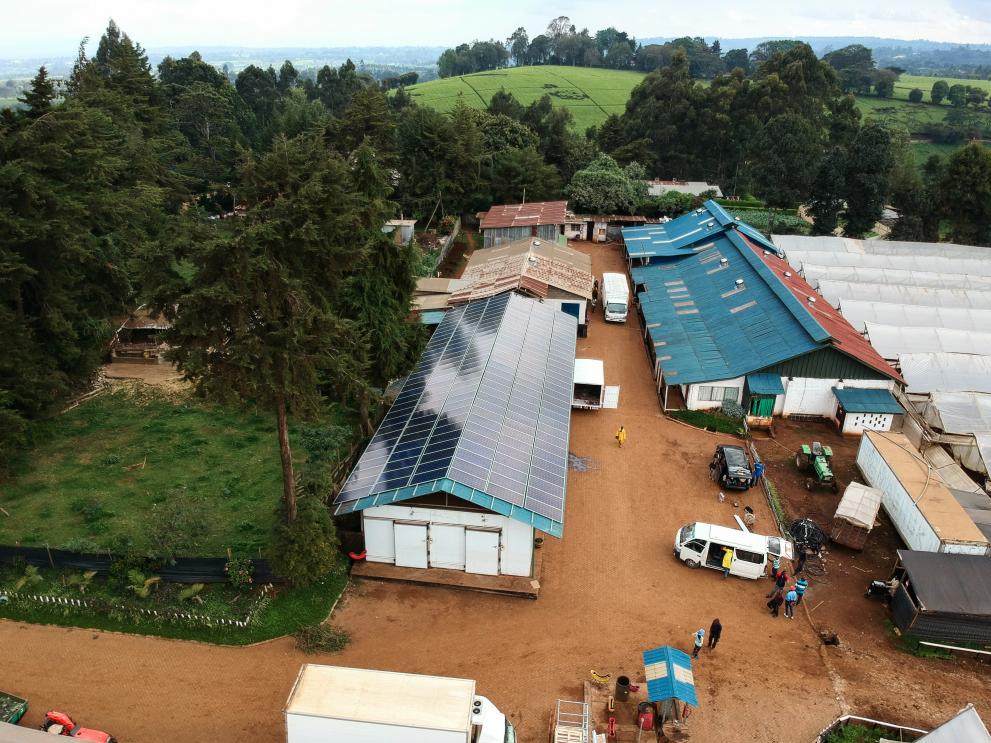
Deploying solar mini-grids across the nearly 300 refugee settlements in sub-Saharan Africa would deliver clean and reliable energy to 5 million people while avoiding the emissions of 2.86Mt CO2 over 20 years, compared to the use of diesel generators. This is roughly equivalent to the yearly emissions of 1.5 million cars in the EU driven for 15000 km.
The findings were shared in a recent article published in Nature Energy by JRC and Utrecht University scientists.
The study provides a consistent estimation of the environmental benefit and overall costs of providing clean electricity access to the almost 5 million refugees. This information could help decision-makers evaluate whether and how to deploy new energy infrastructures.
Effective strategies for financing electrification of rural or vulnerable communities remain a challenge in Sub-Saharan Africa. People living in refugee camps are among the most affected by lack of access to electricity. Yet, they are too often left out of the electrification efforts, partly because the settlements are considered temporary and because of a poor understanding of their energy needs.
The energy needs in refugee camps
By interviewing 300 refugees and using publicly available traditional and Earth observation data, the scientists estimated a total electricity demand of 154 GWh/year. This figure includes lighting, air circulation, and phone charging for 1.15 million households and the estimated demand of almost 59,000 microbusinesses and around 7,000 institutional loads. To put these numbers in perspective, a high-income country with a similar population would consume around 150 times more electricity.
The analyses shows that it is feasible to meet the needs by deploying fully renewable mini-grids in the almost 300 refugee settlements. Mini-grids are electric power generators and distribution systems that provide energy for remote settlements such as refugee camps.
Outside the house, access to electricity is also associated with improved women's safety, health care and education. Moreover, a mini-grid also provides income-generation opportunities for the refugees and their host communities, by facilitating informal micro-businesses such as cooled-beverages vendors, phone charging spots, and hair-dressing salons.
The cost
The study estimates that covering the electricity needs for the almost 5 million refugees living in 300 settlements in Africa with solar mini-grids would cost just over US$1billion.
While deploying fully renewable photovoltaic mini-grids instead of other less environmentally friendly alternatives has a higher up-front cost, the report highlights that several previous studies have found solar options to be less expensive when comparing their lifetime viability.
The detailed results of the study are explained through the open-source web tools integrated in the JRC Africa Knowledge Platform: Energy Tool and Energy Indicators.
Previous work: What the JRC does for clean energy in Africa
Over the last year, the JRC team published a series of high-impact-factor peer-reviewed papers which provide a basis for planning clean energy programmes in Sub-Saharan Africa. The findings can support a better integration of energy, health and humanitarian policy by identifying the areas or countries where the investments are most needed.
The research provides a bottom-up geographic information system (GIS) framework for policy makers, researchers, consultants, and other stakeholders.
- In “An action agenda for Africa’s electricity sector”, scientists identified a suite of actions that, if implemented, would put Africa's electricity sector on track to sharply increase electrification rates across the continent while securing long-term access to affordable cleaner energy, and reducing greenhouse-gas emissions.
- A recent study shows that solar photovoltaic systems are more affordable to no less than 36% of the unelectrified populations and can boost the efforts to reduce poverty: “Mapping of affordability levels for photovoltaic-based electricity generation in the solar belt of sub-Saharan Africa, East Asia and South Asia”
- Results from “Achieving universal electrification of rural healthcare facilities in sub-Saharan Africa with decentralized renewable energy technologies” shed new light on the potential of decentralised energy systems to offer a reliable, quick, and cost-effective way to increase access to electricity for rural healthcare facilities in sub- Saharan Africa. This study identified more than 55,000 such facilities without electricity access and analysed the costs and benefits of powering each of these with solar photovoltaic and battery storage systems.
- New investments in decentralised power generation within Sub-Saharan Africa play a progressively important role in increasing energy access and addressing the continent's electricity supply shortages. The paper “A multidimensional high-resolution assessment approach to boost decentralised energy investments in Sub-Saharan Africa” provides a comprehensive and consistent analysis of the attractiveness for decentralised photovoltaic technologies at an unprecedented level of detail using both high-resolution spatial data and national report.
Sources
Details
- Publication date
- 20 June 2022
- Author
- Joint Research Centre
